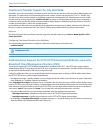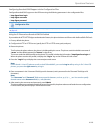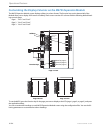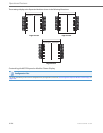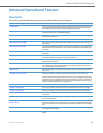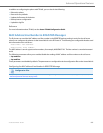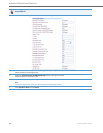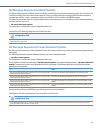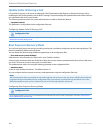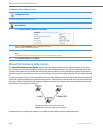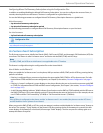
Advanced Operational Features
6-4 41-001343-02 REV04 – 05.2014
TR-069 Support
The IP Phones support the Technical Report (TR)-069 Protocol. This Protocol is a bi-directional HTTP based protocol that
provides the communication between Customer-Premises Equipment (CPE) (like the IP Phones) and Auto Configuration
Servers (ACS) over DSL/broadband connections. It includes both a safe auto configuration and the control of other CPE
management functions within an integrated framework.
Service providers can, through TR-069, use one common platform to manage (through the internet) all of their customer
premise devices, regardless of the device or manufacturer. If TR-069 is enabled on the phones, when the remote ACS
boots the phones, they contact the ACS and establish the configuration automatically.
“Early-Only” Parameter in Replaces Header RFC3891 The phones support the “early-only” parameter in the “Replaces” header as referenced in
RFC3891.
Switching Between Early Media and Local Ringing The phones support switching between early media and local ring tone.
Enable Microphone During Early Media Allows you to enable or disable the microphone during early media.
“Call-Info” Header to 200ok Responses for Shared Call
Appearance (SCA) Lines
In Release 2.6 and up, a “Call-Info” header is included in the 200ok response to an INVITE,
RE-INVITE, and UPDATE messages for SCA lines.
Reason Header Field in SIP Message The IP Phones support the receiving of the Reason Header Field in a SIP CANCEL message,
as described in RFC3326.
Configurable “Allow” and “Allow-Event” Optional Head-
ers
On the IP Phones, an Administrator can enable or disable whether or not the optional
“Allow” and “Allow-Events” headers are included in the NOTIFY message from the phone.
Configurable SIP P-Asserted Identity (PAI) The IP Phones support a private extension to SIP for Asserted Identity within trusted net-
works (as defined in RFC 3325).
Configurable Route Header in SIP Packet The IP Phones support a parameter that enables or disables the addition of the Route
header in a SIP packet.
Configurable Compact SIP Header The phones provide a feature that allows an Administrator to shorten the length of a SIP
packet by using the compact form. This feature is in accordance with Compact SIP Headers
defined in RFC 3261.
Reject INV or BYE when Unsupported Value in REQUIRE
Header
The IP Phones support a parameter that allows you to enable or disable the rejection of an
INV or BYE with a “420 Bad Extension” if the INV or BYE contains an unsupported value in
the REQUIRE header.
XML URI for Key Press Simulation The phones provide a feature that allow an XML Developer or Administrator to define XML
Key URIs that can send key press events to the phone, just as if the physical hard key,
softkey, or programmable key were pressed on the phone.
Domain Name System (DNS) Server Pre-caching Support This feature allows administrators to configure the phone to download a text file which
contains persistent DNS “A record” hostname to IP address mappings. In addition, support
for persistent DNS “SRV records” has been added to permit SRV based high availability of
services.
Configurable Transport Protocol for SIP Services and
RTCP Summary Reports
The IP Phones support a parameter that allows administrators to ability to configure the
transport protocols used for SIP services and RTCP summary reports.
Configurable Alphanumeric Input Order for Username
Prompts
This feature allow administrators the ability to change the default behavior of the keypad
input order during username prompts from uppercase letters > digit > lower case letters to
digit > uppercase letters > lower case letters.
Active Voice-over-IP (VoIP) Recording When using the IP phones with an Aastra call manager supporting voice recording and a
recording system with the predefined subset of the SIP interface, administrators can con-
figure the phones to send duplicate copies of the transmit and receive RTP or SRTP voice
packets to the voice recording system.
BroadSoft BroadWorks Executive and Assistant Services
Feature
The Executive and Assistant Services feature allows Administrators to create an inter-net-
work relationship between Executives and Assistants allowing calls to the Executive’s
phone to be screened, filtered, and routed to an Assistant, whereby the Assistant can
answer, divert, or push the filtered call back to the Executive (6730i, 6731i, 6753i, 6755i,
6757i, 6757i CT, 9143i, 9840i, and 9840i CT IP phones only).
Feature Description



